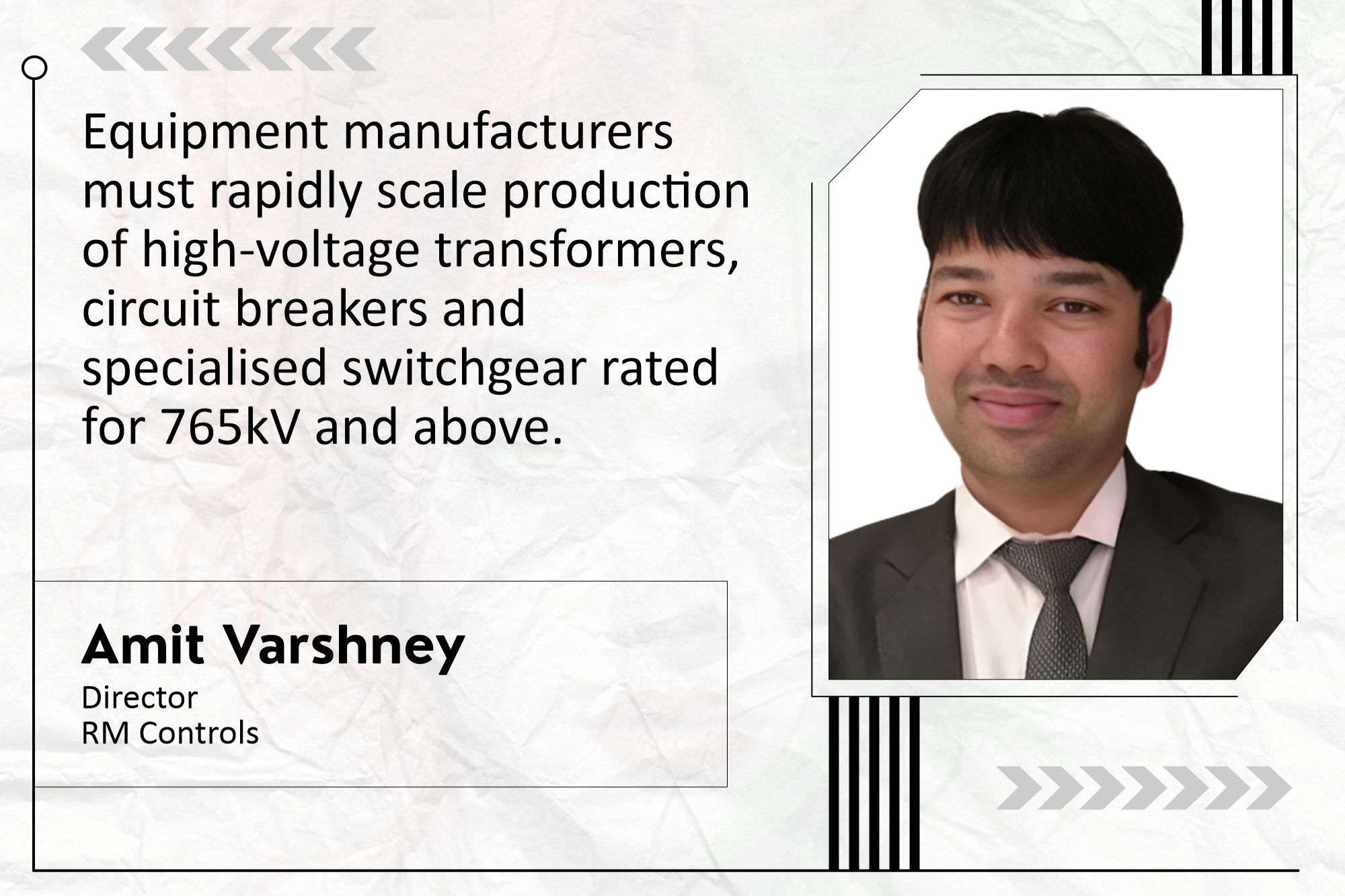We need a major expansion of high-voltage lines linking RE zones to demand centers
By EPR Magazine Editorial March 25, 2025 6:45 pm IST
By EPR Magazine Editorial March 25, 2025 6:45 pm IST

Renewable Energy is completely reshaping the electrical equipment sector. Amit Varshney expresses his views in talks with EPR; let us know more.
How are digital technologies improving grid reliability and supporting renewable energy goals?
Digital technologies like IoT, AI, and predictive maintenance are essential for grid modernisation efforts. IoT sensors are being installed throughout India’s grid to monitor equipment health and power flows in real-time. This is particularly valuable for remote solar microgrids in rural areas where physical access is limited. Smart meters with IoT connectivity help improve billing accuracy and reduce power theft.
AI is helping grid operators forecast renewable energy generation, which is crucial as India works toward its 500 GW renewable energy target by 2030. Distribution companies use AI for better load forecasting, while industrial customers implement AI-powered energy management systems to optimise their consumption patterns. Predictive maintenance solutions monitor critical equipment like transformers and substations to identify potential failures before they happen. For renewable assets like solar panels and wind turbines, predictive analytics help optimise maintenance schedules, which is particularly important given the country’s diverse climate conditions.
How can India overcome manufacturing constraints, raw material shortages and workforce gaps to meet its renewable energy integration targets?
This ambitious target creates several significant challenges for T&D infrastructure in India. We need a massive expansion of high-voltage transmission corridors connecting renewable energy zones to load centres. Equipment manufacturers must rapidly scale production of high-voltage transformers, circuit breakers and specialised switchgear rated for 765kV and above. Distribution networks need significant modernisation. The networks were designed for one-way power flow but now must handle bidirectional flows from distributed solar installations. This requires advanced distribution transformers, smart protection devices, and automated control systems. Many manufacturers struggle to shift their product lines to meet these new specifications.Raw materials are constrained, particularly speciality electrical steel, copper, and insulation materials. Manufacturers face skilled workforce shortages for specialised equipment production. While the PLI scheme is helping, domestic manufacturing capacity for advanced grid equipment remains insufficient to meet projected demand, particularly for HVDC components and digital control systems. Equipment shortages are already causing project delays. Long lead times for critical components like power transformers and GIS substations extend project timelines. This increases financing costs and threatens India’s ability to meet its 2030 renewable integration targets unless manufacturing capacity is scaled up rapidly.
How can India address battery supply chain constraints and longer-duration storage needs to enhance grid stability and reliability?
The energy storage sector is transforming rapidly to meet growing grid stability needs. We are seeing evolution across multiple fronts simultaneously. Lithium-ion batteries still dominate the market due to falling costs and improving energy density. However, we see increasing diversification with flow batteries gaining ground for longer-duration storage applications of 4-10 hours. For specialised applications, technologies like compressed air energy storage and gravity-based systems are being deployed where geography permits. The mix is becoming more application-specific rather than one-size-fits-all. Modern battery energy storage systems incorporate AI-powered management software to predict grid needs and optimise charging/discharging cycles. These systems can now respond to millisecond grid frequency fluctuations, providing primary frequency response services traditionally handled by spinning reserves from thermal plants. Rather than treating storage as a standalone asset developer, they create hybrid systems with co-located solar, wind, and storage systems operating as unified plants.
We use cookies to personalize your experience. By continuing to visit this website you agree to our Terms & Conditions, Privacy Policy and Cookie Policy.